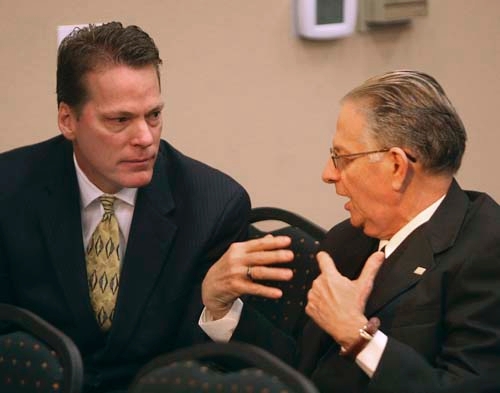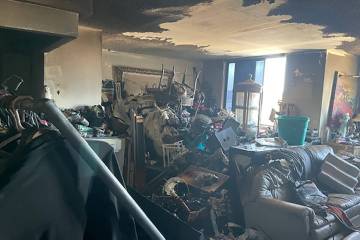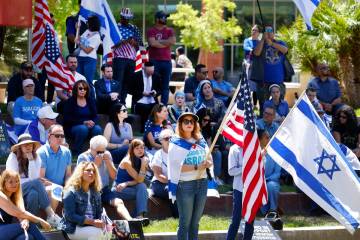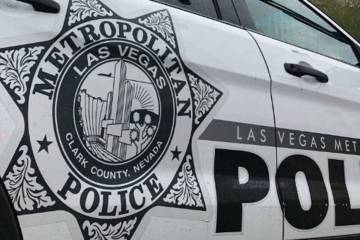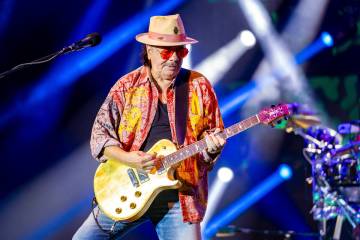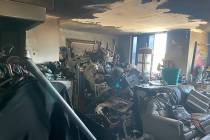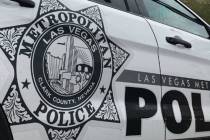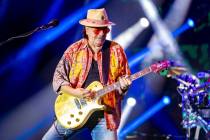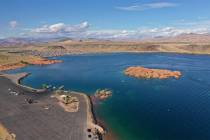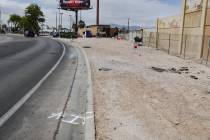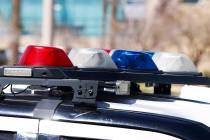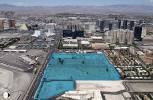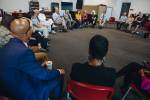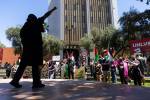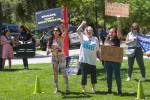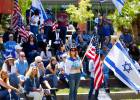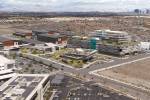UNLV stadium plan gets OK
Early on Friday, before the TV cameras were switched on, before the lawyers had their say and the politicians got their names in the minutes for the record and a dozen high-powered supporters gushed over the thrill of it all, UNLV President Neal Smatresk was strolling around, shaking hands.
"I feel good today," he confided to a couple of reporters.
He had good reason to.
The transformation of UNLV's campus was about to begin.
The higher education system's Board of Regents gave its initial OK to a plan that would build a 40,000-seat domed stadium on campus. The stadium would be accompanied by thousands of units of on-campus housing, 600,000 square feet of retail space, a spacious outdoor gathering spot and parking for thousands of cars.
The plan, backed by developer Majestic Realty, needed the Board's approval to get going. The approval technically allows the university to enter into an exclusive negotiating agreement with Majestic for 150 days.
Majestic will now seek legislative approval to create a special enterprise district around all the new things they plan on building. They'll collect and keep whatever tax revenue is generated in the district to help finance the entire project.
No other public money, including money from UNLV or its students, will be used on the project, said its principal spokesman, Craig Cavileer.
Cavileer, president of the Silverton Casino, said there is no way to estimate how much the whole project will cost. It's also unknown when it all might come together, though he did say it would almost certainly be built in phases, and that it would probably be a year or more just in the planning phase.
The project, if it ever actually happens, would cover about 150 acres on UNLV's 332-acre campus. Much of it would surround the current Thomas & Mack Center near the southwest corner of campus. The Thomas & Mack would also be refurbished.
The idea alone had UNLV boosters absolutely giddy.
"When this idea was first announced, there was an excitement on campus that I hadn't seen in quite a while," said David Rapoport, the student body president.
John O'Reilly, the vice chairman of the UNLV Foundation, called the project a turning point for the university.
"This will transform this community for the rest of our lives," he said.
"Lord, behold. We have an opportunity to get what we've been wanting," said Spencer Haywood, a former NBA player who helped bring the all-star game here and now lives in Las Vegas.
In all, eighteen people spoke, including representatives of the alumni association, the foundation, the football foundation and the general public.
Only one person had anything negative to say. That was Pat Lundvall, an attorney representing a competing stadium proposal.
She warned the regents. "The devil is in the details," she said. She said the agreement's language made it seem like UNLV would be stuck in the agreement because it said "shall" in a couple of places.
She also said state law requires a competitive bidding process on projects like this. She detailed these concerns in a seven-page memo she sent to the regents before Friday's meeting.
Bart Patterson, the higher ed system's vice president for administrative and legal affairs, dismissed her concerns. There was an easy way for UNLV to get out of the agreement, he said. The competitive bidding law does not apply to this circumstance, he said.
Others, too, dismissed Lundvall's complaints.
Ted Quirk, a former chairman of the UNLV Foundation, called critics "self serving." They were "shameful," he said.
Smatresk had already noted that if another stadium were built in town -- there are several other proposals, none of them very far along -- it would cost UNLV millions in lost revenue.
The Thomas & Mack, he said, is the top grossing college arena in the country. It brings in $26 million a year in total revenue. Another arena that took away its business could cost the university's athletic programs $5 million to $7 million a year.
Former Gov. Robert List spoke, too. He called this "an incredible opportunity."
He noted that UNLV built the Thomas & Mack Center when he was governor, and that was also done during hard economic times. "I think it would be a tragedy to let this great, historic moment slip away," he said.
"I think it will be the most important vote this Board of Regents ever makes."
The regents, many of whom spoke, seemed excited. But Regent Michael Wixom cautioned, too, that it is their job to be skeptical. Several others echoed that concern.
Board Chairman James Dean Leavitt said he would make the stadium proposal a standing item for the Board's investment and facilities committee.
Regent Cedric Crear, who abstained from voting because he is a member of the Las Vegas Arena Foundation, a competing proposal, said he was concerned that the university could end up stuck with a big bill if the project falls through.
He also pushed Cavileer to reveal how much the project would cost. "I know you guys have a number," he said.
Cavileer insisted that was not true. The final cost would depend on many factors, he said, including which parts of the project actually get built. It is simply an idea for now.
"We do not have a cost because we do not have a project," he said. "We have a great plan." He also assured Crear that UNLV faced no risk.
Regent Mark Alden said he was concerned that entering into an exclusive agreement could put UNLV at legal risk.
In the end, Alden was the only regent to vote against the agreement.
Contact reporter Richard Lake at rlake@review journal.com or 702-383-0307.



